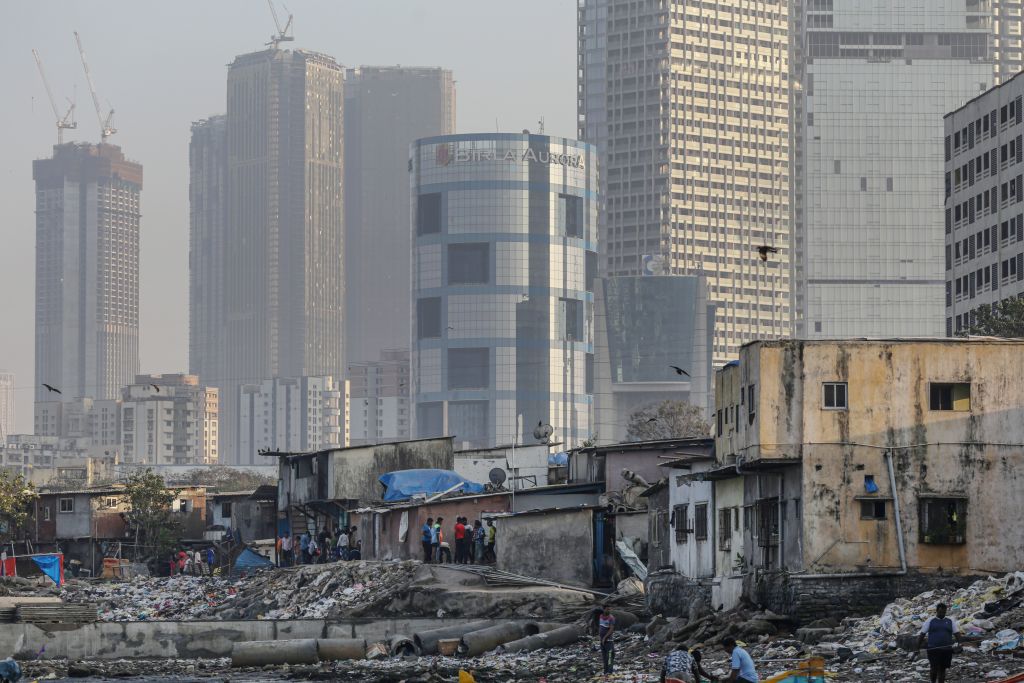A new study from the World Inequality Lab finds that the present-day golden interval of Indian billionaires has produced hovering income inequality in India—now among the many many highest on the planet and starker than inside the U.S., Brazil, and South Africa. The opening between India’s rich and poor is now so giant that by some measures, the distribution of income in India was further equitable beneath British colonial rule than it’s now, based mostly on the group of economists who co-authored the study, along with the renowned French economist Thomas Piketty.
The current full number of billionaires in India is peaking at 271, with 94 new billionaires added in 2023 alone, based mostly on Hurun Evaluation Institute’s 2024 global rich list printed Tuesday. That’s further new billionaires than in any nation other than the U.S., with a collective wealth that portions to virtually $1 trillion—or 7% of the world’s full wealth. A handful of Indian tycoons, equal to Mukesh Ambani, Gautam Adani, and Sajjan Jindal, in the mean time are mingling within the similar circles as Jeff Bezos and Elon Musk, a variety of the world’s richest people.
“The Billionaire Raj headed by India’s modern bourgeoisie is now further unequal than the British Raj headed by the colonialist forces,” the authors write.
The assertion is very stark when considering India is now hailed as an 8% GDP improvement monetary system, based mostly on Barclays Evaluation, with some projecting that India is poised to surpass Japan and Germany to turn into the world’s third-largest monetary system by 2027.
Nevertheless the authors of the World Inequality Lab study reached this conclusion by monitoring how a whole lot of India’s full income, along with wealth, is held by the nation’s excessive 1%. Whereas income refers again to the sum of earnings, curiosity on monetary financial savings, investments and completely different sources, wealth (or web worth) is the entire price of belongings owned by an individual or group. The authors combined nationwide income accounts, wealth aggregates, tax tabulations, rich lists, and surveys on income, consumption, and wealth to present the study’s findings.
Be taught Additional: Why India’s Next Election Will Last 44 Days
For income, the economists checked out annual tax tabulations launched by every the British and Indian governments since 1922. They found that even all through the very best recorded interval of inequality in India, which occurred all through the inter-war colonial interval from the Nineteen Thirties until India’s independence in 1947, the very best 1% held spherical 20 to 21% of the nation’s nationwide income. As we communicate, the 1% holds 22.6% of the nation’s income.
Equally, the economists moreover tracked the dynamics of wealth inequality, beginning in 1961, when the Indian authorities first began conducting large-scale household surveys on wealth, debt and belongings. By combining this evaluation with information from the Forbes Billionaire Index, the authors found that India’s excessive 1% had entry to a staggering 40.1% of nationwide wealth.
Because of the number of Indian billionaires shot up from one in 1991 to 162 in 2022, the entire web wealth of these folks over this period as a share of India’s web nationwide income “boomed from beneath 1% in 1991 to a whopping 25% in 2022,” the authors talked about.
The report moreover found that the rise in inequality had been notably pronounced as a result of the ruling Bharatiya Janata Social gathering first received right here to vitality in 2014. Over the previous decade, primary political and monetary reforms have led to “an authoritarian authorities with centralization of decision-making vitality, coupled with a rising nexus between big enterprise and authorities,” the report states. This, they’re saying, was susceptible to “facilitate disproportionate have an effect on” on society and authorities.
They added that widespread Indians, and by no means merely the Indian elite, may nonetheless stand to attain from globalization if the federal authorities made further public investments in nicely being, education, and weight-reduction plan. Moreover, a “great tax” of two% on the net wealth of the 167 wealthiest Indian households in 2022-23 would result in 0.5% of nationwide income in revenues, and “create valuable fiscal home to facilitate such investments,” the authors argued.
Until the federal authorities makes such investments, nonetheless, the authors warning in the direction of the potential of India’s slide in the direction of plutocracy. The nation was as quickly as a job model amongst post-colonial nations for upholding the integrity of various key institutions, the authors say, and they also stage out that even the standard of economic info in India to verify inequality has declined not too way back.
“If solely for that purpose, income and wealth inequality in India must be fastidiously tracked and challenged,” the authors say.
Thank you for being a valued member of the Nirantara family! We appreciate your continued support and trust in our apps.
-
Nirantara Social - Stay connected with friends and loved ones. Download now:
Nirantara Social

-
Nirantara News - Get the latest news and updates on the go. Install the Nirantara News app:
Nirantara News

-
Nirantara Fashion - Discover the latest fashion trends and styles. Get the Nirantara Fashion app:
Nirantara Fashion

-
Nirantara TechBuzz - Stay up-to-date with the latest technology trends and news. Install the Nirantara TechBuzz app:
Nirantara Fashion

-
InfiniteTravelDeals24 - Find incredible travel deals and discounts. Install the InfiniteTravelDeals24 app:
InfiniteTravelDeals24

If you haven't already, we encourage you to download and experience these fantastic apps. Stay connected, informed, stylish, and explore amazing travel offers with the Nirantara family!
Source link

